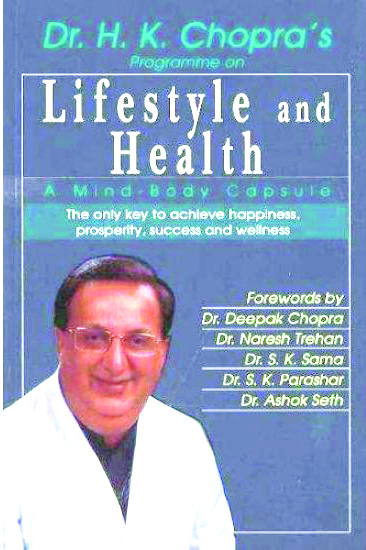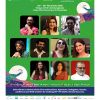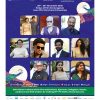Goa is abuzz with excitement as vintage bike and car owners, users, collectors and fans are decking […]

MAKE YOUR OWN SOURDOUGH BREAD!
Eating is Fun / Eating is Yuck! - A variety food column, Life & Living, Mar 23- Mar 29 2024 March 22, 2024FUN SOURDOUGH BREAD-MAKING classes with Satyashree Gandham of Simply Sourdough …everybody is seeking sourdough bread these days for body beautiful; the ladies are Preeta, Rohini…Satya…Pallavi, and there’s Carl whose loaf was arguably the best treated with TLC! Also, glimpse of some of our sourdough loaves and bottles of starter to start baking straightaway at home (store starter in fridge for continuity in baking sourdoughs).
By Tara Narayan
IT’S like every other person I meet these days is busy learning how to make their own sourdough bread! For all kinds of reasons, sourdough bread has caught the consciousness of those who give a damn about what they put in their mouth in their own interests. Is sourdough bread better to eat, more nutritious?
Yes, say the sourdough mistresses and masters, because they’re using fermented starters and fermented is chock-a-block with the goodness of nutrients (as in traditional rice-urad dal idli-dosa-dhokla batters). Also, go check out the natural probiotic friendships with gut bacteria in dairy curd around the world, the Korean relish kimchi or the German juniper berry spiked sauerkraut (which is my favourite probiotic cabbage relish!), then heard of kambucha, some lemon and veggie pickles, etc.
To return to sourdough bread it is a far cry from the industrial sliced white bread enshrined with carbo death in them and which we eat morning, noon and night! The fresh Goan breads are better if you’re choosing between two evils.
It’s sourdough bread for the rich and privileged, and even the not-so-rich and privileged prefer to eat a few slices of sourdough bread if they can find it in their own homes or in some of their friends’ home. Like me. For example, I know I may always find sourdough bread in my sourdough mistress’ baker friend Satyashree Gandham’s home.
She’s Satya to friends and likes to describe herself as a “global citizen, 4-year-old Goan, was happily married, now happily single”…she started a concept café in Caranzalem called Simply Sourdough and it was a runaway success until the trouble presented in the form of an owner upping his rental absurdly. Not one to be defeated and ever positive Satya just said, “I will bake from home and market myself online…”
She’s got heaps of friends and clients for her range of sourdough breads and several eateries down the coastal belt of Goa order sourdough bread from her. I’d say she’s the best although now there are several sourdough bakers doing home baking for personal consumption and for part-time business reasons to stay alive and kicking
IN FACT, recently I found myself dropping in on one of Satya’s sourdough classes, she says to come over easily and offers sourdough bread and the best gourmet coffee this side of town. She’s a filter coffee connoisseur and helps me lord, I think I’m becoming one too! Anyway, there we were last week – four women (Pallavi, Preeta, Rohini, me and one man, Karl who loves and plays hockey) — visiting with Satya at her lovely terraced flat is always a happy thing to do and one may do so to buy or learn from her how to make sourdough bread.
It was a sort of lovely day out spent learning and arguing about the virtues of sourdough bread. Satya like a strict teacher (with chalk and blackboard set up) told us about the nitty-gritty of flour, bread, starters, etc, and in between it was making our own starter with help from her own mother starter which she kept going forever, and then the measuring of flour of choice…come the mixing, kneading, resting, kneading again half-a-dozen time this way and that way, aggressively first and later gently like caressing Hema Malini’s cheeks or something like that.
It’s like bread is human, and has character, if you want a loaf of healthy sourdough bread be nice, and make love nicely…all that gook was fed to us and we laughed back with our own backchat! In between there was more coffee and open sandwiches of sourdough bread of course; for lunch, Satya’s girl Friday Jamuna cooked up a kichadi with sourdough nuggets in it I think, not sure, whatever, it was agreeable with tangy bitter gourd sabzi.
TO wind up we learned sourdough bread stories, why weighing is important at first to start with, there are magical starters which must not be allowed to rot but mothered so that they work their magic from one baking session to another forever after…like I said the mixing, binding, and kneading of our respective dough, leaving it to rise several times, in between listening to the rudimentary tips of various flours, and how to make, bake, etcetera, is like a day’s worth of fun time.
VOILA, the well-loved loaves of dough were patterned finally and everyone took them back to their own homes to bake the next day. Loaves continue to rise stored in the fridge but less slowly. Putting them on the window sill but out of direct sunshine is good for leaving them to rise and finally going into the oven for baking….wow, that’s the golden, fragrant bread moment, when the loaves come out and we tap, tap, tap to hear the hollow sound top and bottom. But they will slice smoothly only after a day!
Don’t ask me why or find out if you don’t want to mess up cutting your freshly done loaf out of the oven…there’s a lot to learn about baking bread but basically, it’s only flour, water and starter (instead of yeast fresh or dry doing its job), in final kneading add in pink Himalayan salt if you wish, dipping hand in water several times and the folding which follows.
Hey, make simply sourdough bread, buttery croissants, and crackers, use millet flours to bake wholesome bread to eat and enjoy! By all means, attend some of Satyashree’s sourdough classes, she charges for her classes naturally but afterwards, her does follow up with her students for a friendly chat online or in person.
HONEY, HONEY…ONE MORE TIME!

The other subject preoccupying me is that of honey because I was reading up about it. Now most of us know honey is a natural superfood courtesy the bees of divine Mother Earth. In the old days in every traditional home a bottle of “shahed” would be there in the kitchen cabinet or medicine cabinet. The first sweetness on a baby’s lips and mouth after mother’s milk is arguably a drop of honey, no?
Last week while flicking through all my old health books I came across a chapter exclusively devoted to honey and was once again impressed about how much one should patronize honey in one way or another – my latest passion being a mixture of honey-mustard to spread on a slice of sourdough bread toast before enjoying it.
One must get good natural honey and good mustard sauce too, preferably the flavorful Bengali “karsondi” mustard sauce …mix in equal proportions in small batches and store in the fridge till the craving for toast or bhakri of wheat (if you are gluten-intolerant) or millet (much better) comes up. One may do many honey combos but my favourite is honey mustard. Both traditional classics of life and living a healthy life!
To stay with honey Dr HK Chopra in his book ‘Lifestyle and Health, A Mind-Body Capsule of Happiness” says the only key to achieving happiness is prosperity, success and wellness. Not necessarily in that order presumably. Anyway, the book offers a whole chapter praising the goodness of honey as the elixir of life. Honey has always played a role in the civilizations of old.
What is honey? We all know it is the sweet, sticky, yellowish fluid made by bees from the nectar of flour. Honey is associated with rejuvenation, enhancing life anew and so on. Do you know we have fossils of honeybees doing honey dating back to about 150 million years…it has magical properties with reason or so to speak, providing you get the real honey which is no longer economically affordable.
Honey lovers have been fascinated by the history and lore of beekeeping and extracting honey for ages…it was the key ingredient used by the ancient Egyptians when praying to their gods and goddesses, also the embalming fluid for dearly beloveds when they passed on to another world we know nothing about to date no matter how much we think we do. All comfy fanciful imagination!
TODAY we have many floral honeys, courtesy bees romancing Himalayan flowers, wildflowers, the jamun trees, eucalyptus trees the saffron flowers of Kashmir, not to forget neem trees in bloom (at the Gandhian Naturopathy Uruli Kanchan ashram retreat visitors to come to sit in the garden on benches beneath neem trees in bloom and their scent in the air for inhaling deeply, this is one retreat I love).
Honey is generally speaking acknowledged as medicine and remedy. To honey is credited many curative properties. Says the author Dr HK Chopra, “Modern experiments and observations indicate that there is every reason to consider honey as a remedy. To what does it owe its curative properties? Mainly to the glucose it contains, which has an invigorating effect on the cardiovascular system, but also to its many other ingredients that improve the resistance of the individual.”
I would say eat a teaspoon/tablespoon of honey every day instead of sugar, sugar, and refined industrial sugar which is a carcinogen for the body beautiful. There are many stories about the use of honey in cultural history old and new…in some countries, children suffering from diarrhoea are given a sugar solution to help rehydrate their bodies and replace essential minerals. In South Africa, they discovered that honey is more beneficial than sugar because the bacteria-killing compounds in the honey can actually kill bacteria in the intestines that are causing the diarrhea.
Honey is also a constipation cure, “The high amounts of honey fructose in honey cause it to arrive undigested in the large intestine, which then begins a fermentation process. This process allows fluid to be drawn into the bowel, which acts as a laxative.”
And much more! The Manuka honey of New Zealand is renowned. The honey is from bees fed on a particular type of flowering shrub and has the highest anti-bacterial compound compositions. Look for active Manuka honey which comes in several classifications from white honey to meadow honey, my honey, sunflower honey, motherwort honey, echium honey, raspberry honey, Tatarian honey, sage honey, sainfoin honey, acacia honey, buckwheat honey, melilot thorny or sweet clover honey, mountain honey, hawthorn honey, melilot and wild marjoram honey… chestnut and willow and clover and more floral honey.
Honey is for the heart, brain, respiratory system, cholesterol, gastrointestinal system, diabetes, eyes, teeth, allergy, antibacterial and antifungal properties, healing, blood, weight management, migraine, insomnia, stress, fatigue, children and elderly, osteoporosis, infertility, insect bites, baldness, immune system, hearing loss, longevity, cancer, bad breath, skin. Remember in Ayurveda medicine honey is the medium for faster absorption of various drugs of herbal extracts.
This is to say go invest in some good honey for a makeover lifestyle for yourself! Do you know that approximately one-half of the human diet is derived directly or indirectly from crops pollinated by bees? Honey bees have been an essential part of a healthy agricultural economy and we have forgotten that in today’s mercenary, feckless, godless, insensitive and insensible times. Think about all this and don’t just think.
Excerpted from “Lifestyle and Health” by Dr HK Chopra….

HONEY is a complex mix of 80 per cent natural sugars (sucrose, fructose, glucose and maltose), 10 per cent water and 2 per cent minerals, vitamins, pollen and proteins. Sugar accounts for 95-99 per cent of honey’s dry matter. The majority of these are the simple sugars fructose and glucose, which represent 85-95 per cent of the total sugar. Generally, fructose is more abundant than glucose. This predominance of simple sugars and particularly the high percentage of fructose is responsible for most of the physical and nutritional characteristics of honey. Small quantities of other sugars are also present, such as disaccharides (sucrose, maltose and isomaltose) and a few trisaccharides and oligosaccharides. Though quantitatively of minor importance, their presence can provide information but adulteration and the botanical origin of the honey. Water is quantitatively the second most important constituent of honey. Its content is critical since it affects the storage of honey. Only honey with less than 18 per cent water can be stored with little or no risk of fermentation. The final water content depends on a number of environmental factors during production such as weather and humidity inside the hive, and nectar conditions and treatment of the honey during extraction and storage. The water content can be reduced before or after extraction by special techniques. Among the minor constituents, organic acids are the most important and of these, gluconic acid, which is a by-product of the enzymatic digestion of glucose, predominates. The organic acids are responsible for the acidity of honey and contribute largely to its characteristic taste. Minerals are present in very small quantities, potassium being the most abundant. Dark honey, particularly honeydew honey, is the richest in minerals.
Other trace elements include nitrogenous compounds among which the enzymes originate from the salivary secretions of the worker honey-bees. They have an important role in the formation of the honey. Their commercial importance is not related to human nutrition, but to their fragility and uniqueness. Thus, their reduction or absence in adulterated, overheated or excessively stored honey serves as an indicator of freshness.
Honey has some unique properties that provide health benefits beyond its delicious taste and sweetening capacity. The oligosaccharides in honey have been suggested to promote the growth of beneficial bifidobacteria in the colon. This colonization may be useful following diarrhea or extended use of antibiotics. Honey is also rich in health-promoting antioxidants such as pinocembrin and pinobanksin. The antioxidant content does vary depending upon the floral source and correlates with colour. Honey from buckwheat, the darkest honey, was found to have the highest antioxidant content.
Honey is also useful for persons with type II diabetes. The use of honey produces an optimum blood glucose and insulin response when compared to similar amounts of carbohydrates for sucrose. Since honey contains large amounts of fructose, it tends to be sweeter (depending upon the temperature) than regular sugar, so less of it may be used. However, a tablespoon of honey contains 64 calories and 17 grams of carbohydrate, while a tablespoon of table sugar contains 45 calories and 12 grams of carbohydrate.
Honey has been used in ancient and recent times as a remedy for burns, ulcers and wound dressings. Some researchers have suggested that honey may help to prevent bacterial colonization of a wound and help in the healing process. Due to its osmotic properties, honey creates a moist wound-healing environment in the form of a solution that does not stick to wound tissues. Honey can reduce inflammation and reduce exudate formation more promptly than standard treatments. Honey is not recommended to infants under one year of age since it may contain clostridium botulinum spores which can germinate, grow and produce a toxin in the colon of infants who do not have a fully developed intestinal microflora, resulting in infant botulism. The food guide pyramid reminds us that table sugar (sucrose) is a highly refined carbohydrate and should be used sparingly. Likewise, honey is a concentrated sweetening agent composed essentially of sugars. We should not view honey as a vastly superior sweetening agent to be used without restriction.















